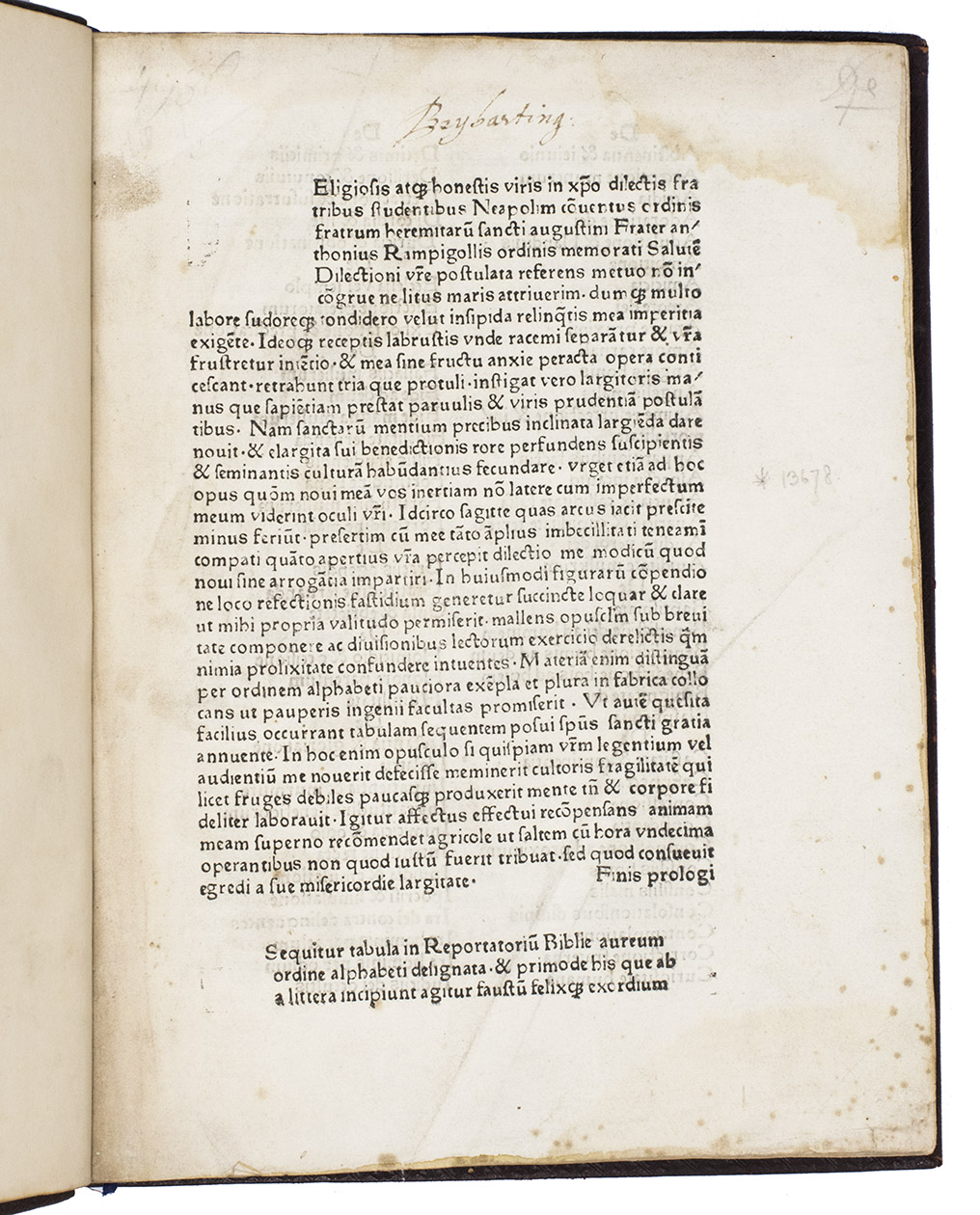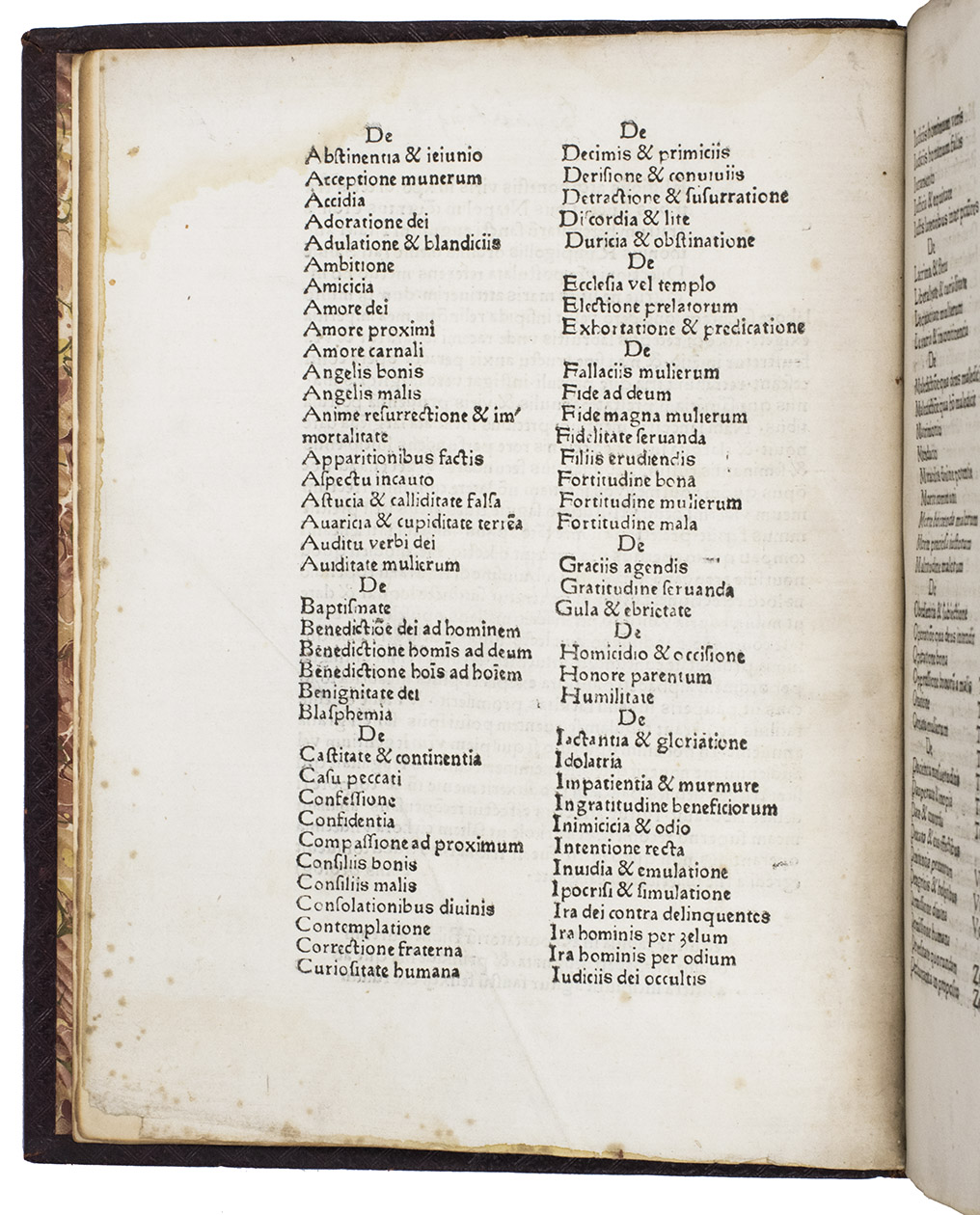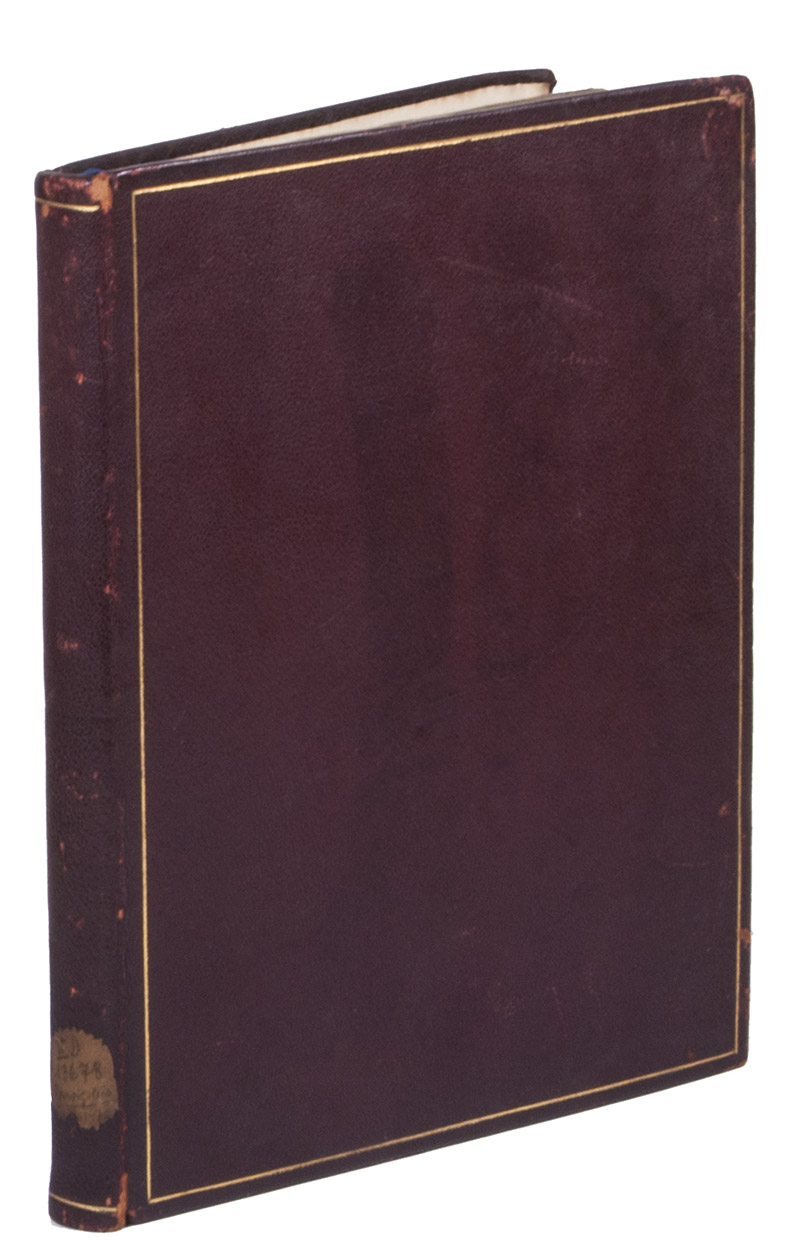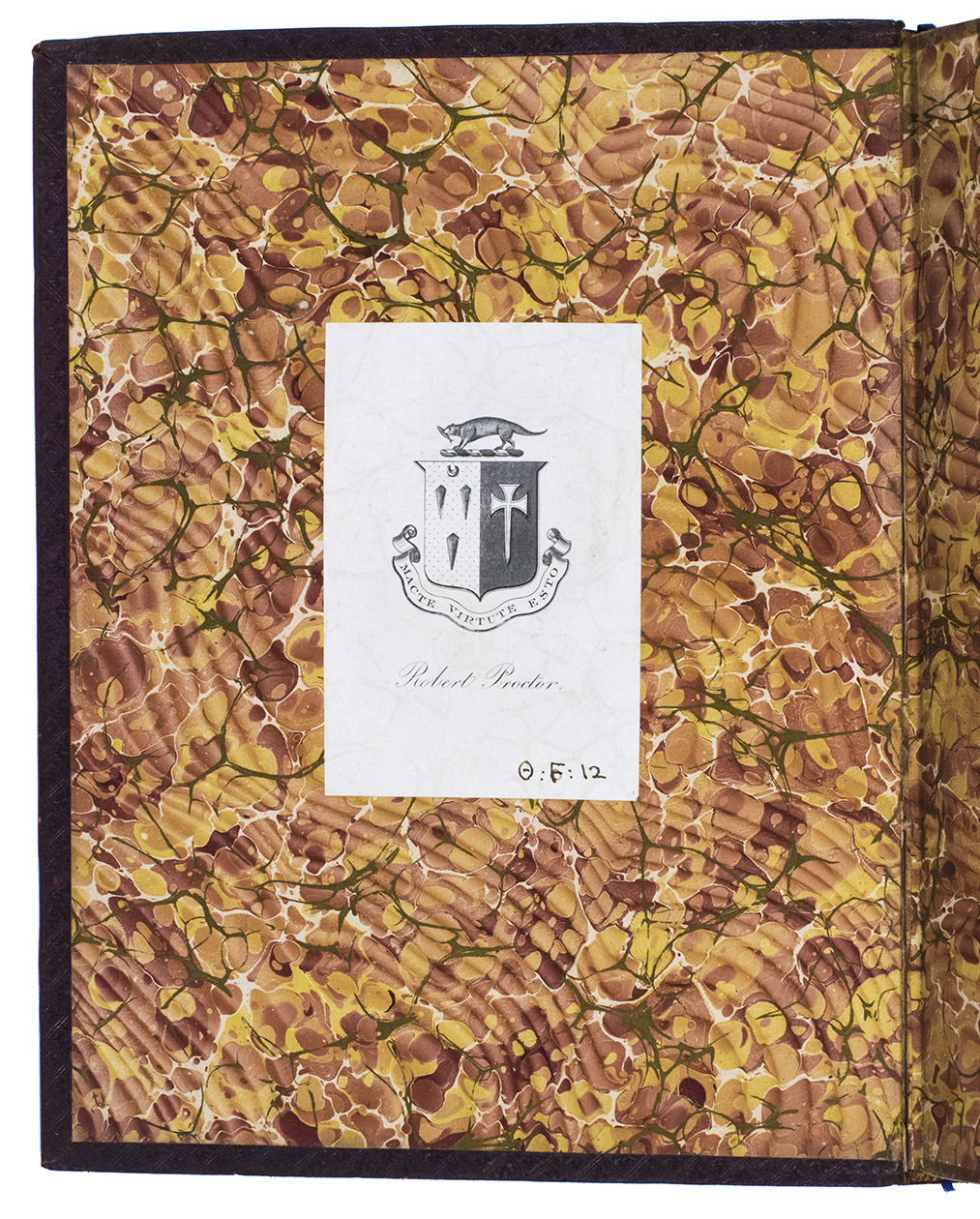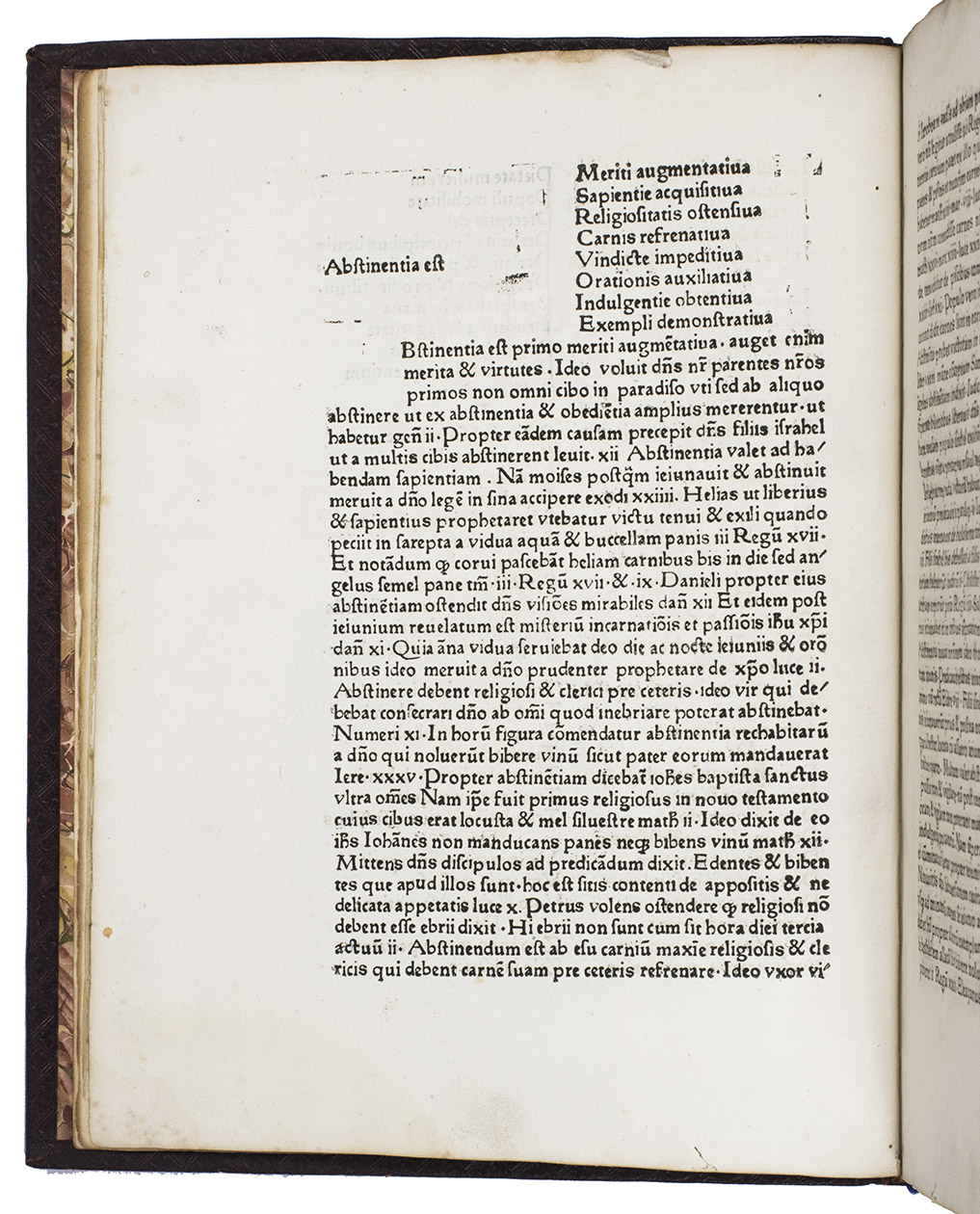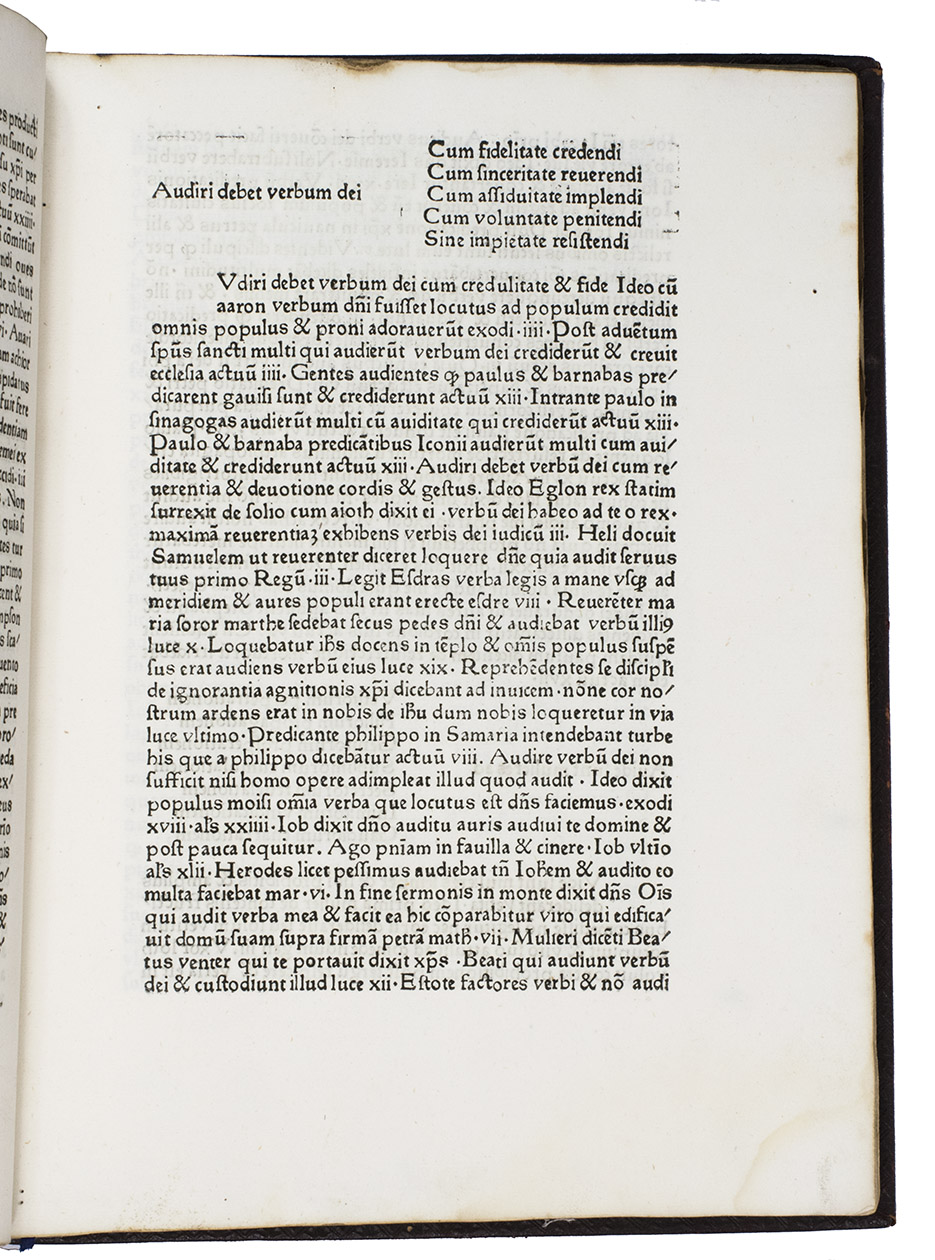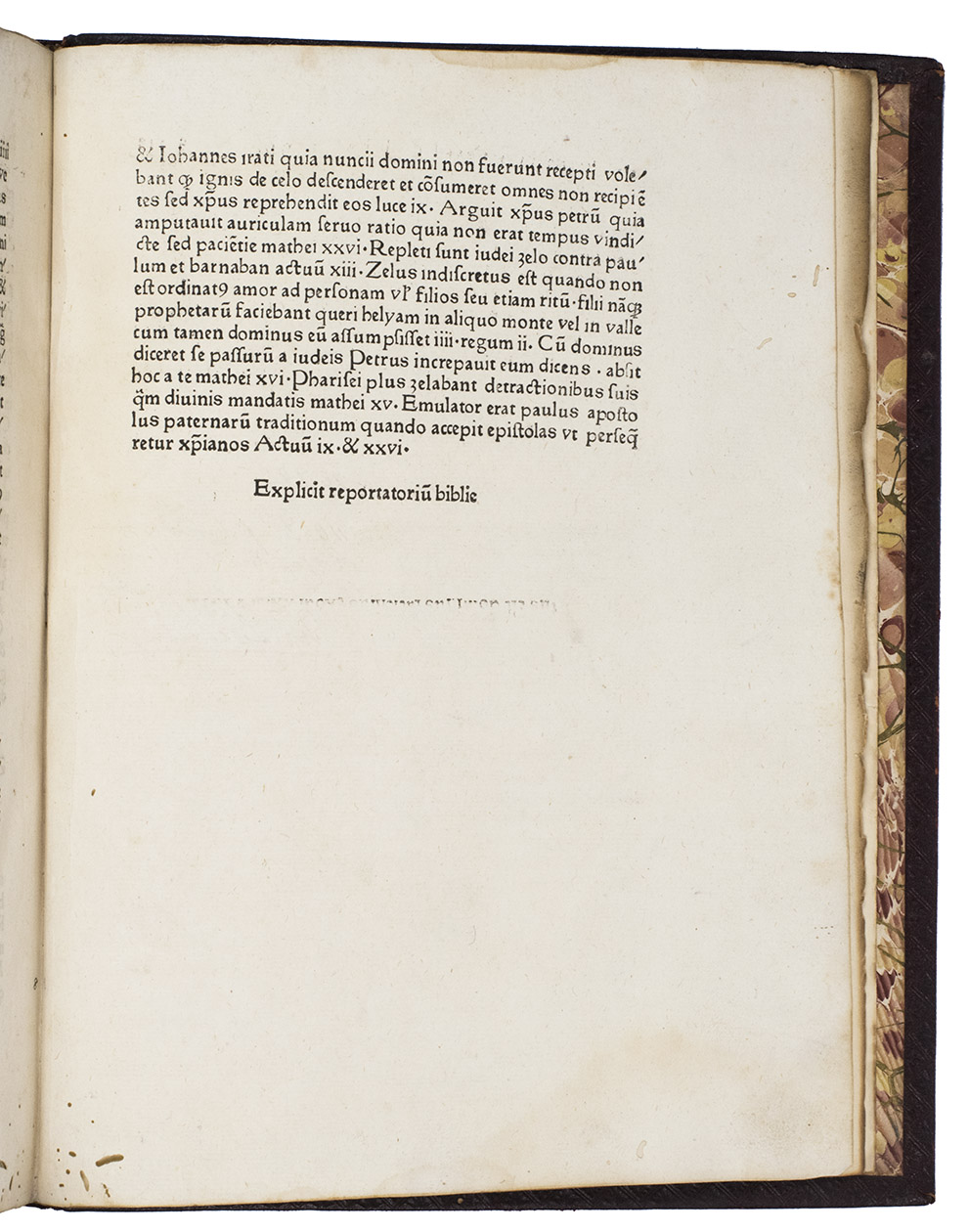[BINDO GUERRI of Siena] with a prologue by Antonius de RAMPIGOLLIS.
Reportatorium Biblie aureum [= Biblia aurea].
[Augsburg], [printing office of the Abbey of Saints Ulrich and Afra], [in the period 1473 to early 1475]. Chancery (Foolscap) folio (28 x 22 cm). With the title in a note following the prologue, at the foot of the first page (and abbreviated at the end of the book), a 2-page alphabetical table of contents and the main text comprising 139 entries.
Burgundy goatskin morocco (ca. 1890?). With the armorial bookplate of Robert Proctor. [231], [1 blank] pp.
€ 16,500
First edition, in the original Latin, of the Biblia aurea (Golden Bible), long attributed to Antonius de Rampigollis (ca. 1360-ca. 1423?), a well-known Augustinian monk from Genoa, who in fact wrote the present one-page prologue for a different but related work of his own, the first edition of Compendium morale, by the Ulrich and Afra printing office in 1473. The printing office added Rampigolliss prologue to the present work, written by Bindo Guerri of Siena (active ca. 1350?, d. 1390), leading to the confusion about the author. The Biblia aurea presents 139 Christian virtues in alphabetical order, each with a heading (beginning with the key word, from abstinentia to zelus indiscretus) and a discussion of the virtue (about one-and-a-half pages on average, but some fill less than a page and some more than two). The entries are based on the Bible, and many priests throughout Europe used the book when preparing sermons for church services. At least eleven Latin editions and a German edition appeared before 1500 but few after 1516 (though a Czech edition appeared in 1543), while Rampigolliss Compendium morale became more common, going through many editions up to 1585 (mostly under the title Figurae Bibliae). Clement VIII placed the Biblia aurea on the Index of prohibited books (for mis-quoting the Bible), apparently in the 1590s, but the prohibition was soon lifted and another Latin edition appeared in 1628.
In 1903, Proctor gave a detailed account of the Ulrich and Afra printing office that produced the present first edition of the Biblia aurea (Proctor owned the present copy), basing his study on a convolute at Cambridge University Library that contained five works (three by the Ulrich and Afra printing office, including the present edition) and included lengthy and very informative manuscript notes by its first owner Ulrich von Ellenbog (ca. 1435-1499) in Augsburg, who worked together with the printing office, initiating their production of the first edition of Quadragesimale viatoris, set in the present type sometime in the period 1473 to 1476.
The main texts of the Biblia aurea and the Compendium morale both begin with "De abstinentia" but continue differently, the former with "Abstinentia est primo meriti argumentativa ..." and the latter with "Castigo corpus meum et in servitutem redigo ...". Not surprisingly, the two works have sometimes been confused.
The manuscript note "Beyharting" above the opening of the text means the book came from the Augustinian Beyharting Monastery, dissolved in 1803, whose collections were dispersed ca. 1807 (Beyharting, 35 or 40 km southeast of München, is now incorporated into Tuntenhausen). With the armorial bookplate of the pioneering incunabulist Robert Proctor (1868-1903), who bought it from the dealer Caspar Haugg in Augsburg 1892; a pencilled chronology of the book dealers who owned it: Lüdwig Rosenthal ca. 1885, Caspar Haugg in 1891 & 1892, Wilfrid M. Voynich (1865-1930) to 1910 and H. Th. Wenner in 1965; and a detailed typescript description in German taped to the back paste-down, noting Proctors 1903 death (at age 35, climbing in the Tirolian Alps) and his article of that year. The first leaf is somewhat worn, with traces of a couple old creases, some marginal spots and a marginal water stain in the upper outside corner, most leaves have a smaller marginal water stain in the lower outside corner and a few have a small browned spot on the edge of the leaf at the head, which has led to a tiny chip, only about 2 mm deep. Further with some small marginal worm holes or trails, mostly confined to about 20 scattered leaves. Otherwise in very good condition and with generous margins. The binding shows some faint stains and minor scratches but is otherwise also very good. Robert Proctors large-margined copy, from the Augustinian Beyharting Monastery, of the first edition of an important and very popular Augustinian religious work, also a remarkable display of a roman printing type that deserves to be better known: nearly the first roman type used north of the Alps and one of the best of the earliest roman types. BMC II 340; Goff R13; GW M36960; Hain-Copinger 13678; Hubay, Augsburg 1746; Hubay, Eichstätt 877; ISTC ir00013000; Madsen 3449; Proctor 1635; Robert Proctor, "Ulrich von Ellenbog and the press of S. Ulrich at Augsburg", The library, s2, 4 (1903), pp. 163-179 at pp. 166, 170, 177 (reprinted in his Bibliographical essays, 1905, pp. 73-88, at pp. 80 etc.), viewable on zendo.org; Sallander 1923; Gutenberg Jahrbuch 1939 pp. 153-154 (reprinted in his Fifty essays, 1966, pp. 141-143; USTC 748381.
Related Subjects:
